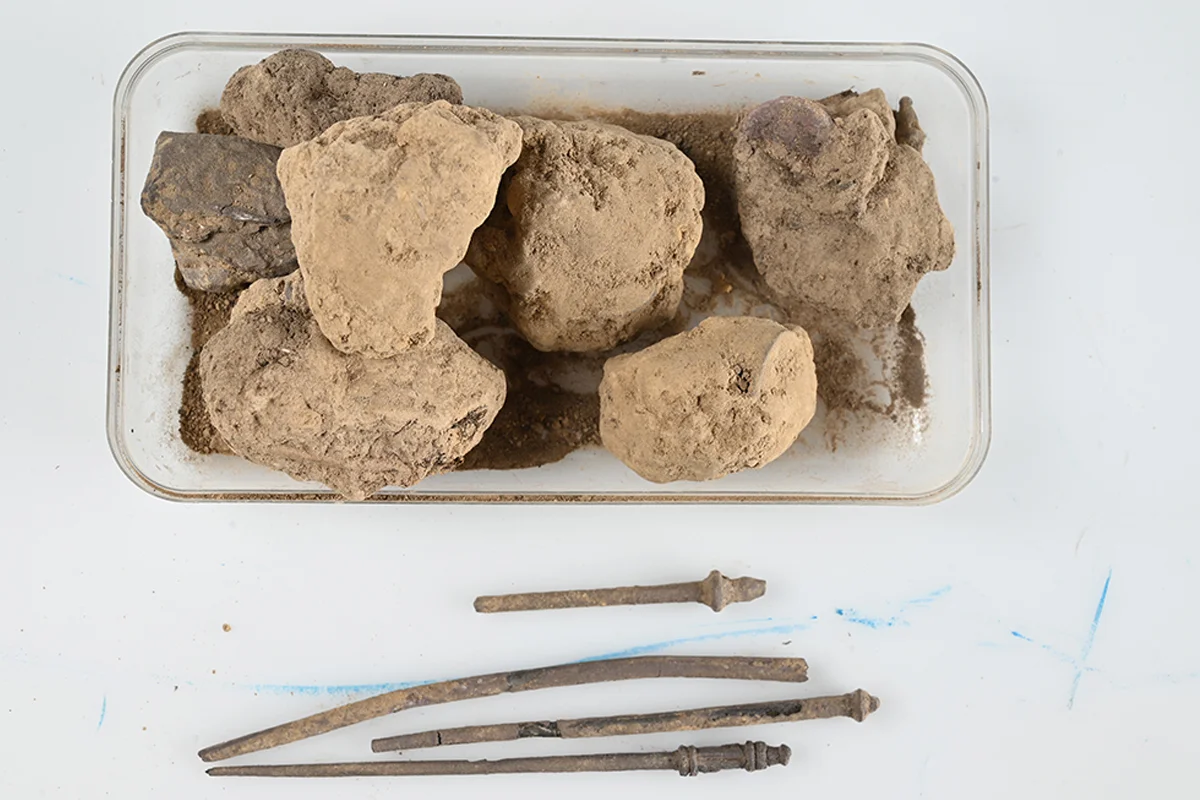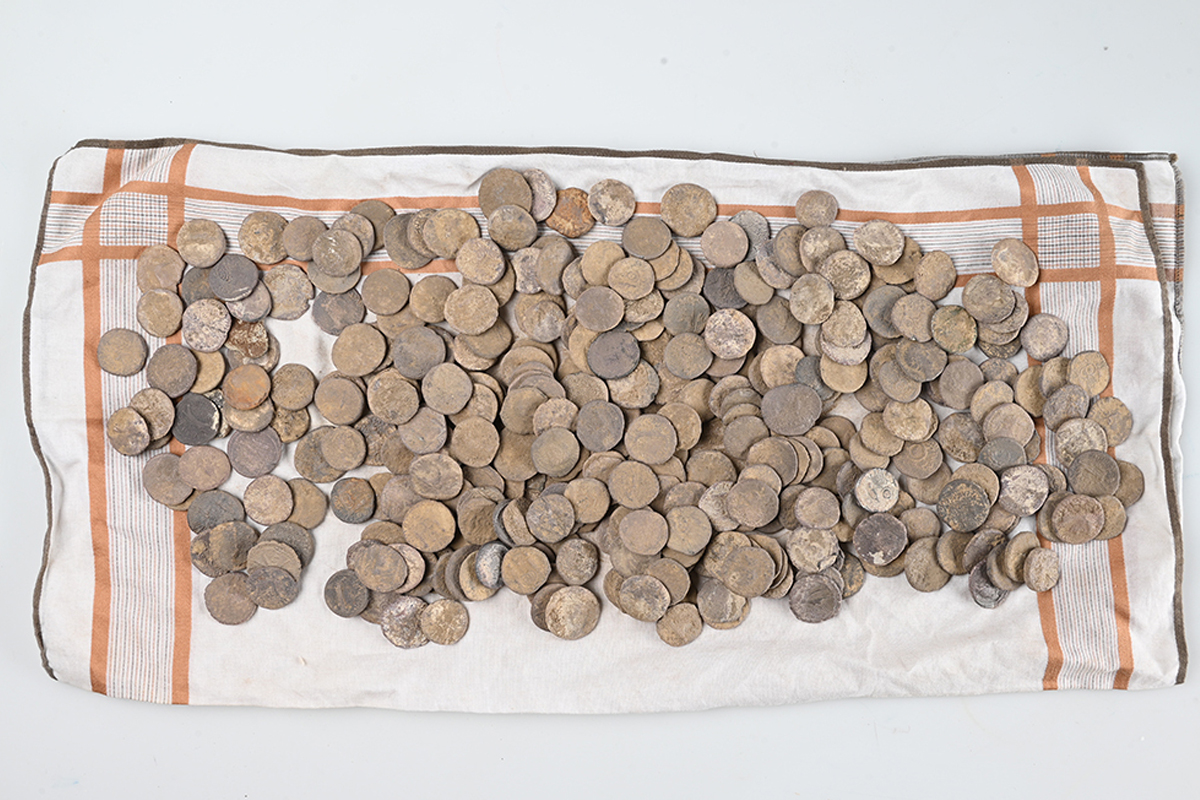A Roman hoard containing 450 silver coins, several silver bars, a gold ring, and a gold coin, has been unearthed near the village of Borsum in the Hildesheim district, Germany.
The hoard dates from the Roman Imperial period around 2,000-years-ago, providing new insights into the complex interactions between the Roman Empire and Germanic tribes.
“This was a time of coexistence, interaction, and sometimes confrontation,” said a spokesperson for the Lower Saxony State Office for Monument Preservation (NLD). “Only after detailed restoration and study can we determine the exact age of the coins, their origins, and the reasons they were buried here.”
The hoard was originally discovered in 2017 by a metal detectorist who failed to report the discovery. Only recently has this individual now come forward, notifying both the police and the monument protection authorities.
Earlier this year, archaeologists conducted an initial inspection of the area where the hoard was unearthed to recover any remaining objects still buried in situ.

“The improper excavation in 2017 destroyed much of the archaeological context,” said the NLD. “Nevertheless, we hoped to determine how the coins were originally deposited, which can reveal valuable information about the circumstances of their burial.”
The recent excavation proved successful. Additional coins were found, and the entire hoard has now been officially recovered. The discovery is considered one of the largest Roman coin hoards ever found in Lower Saxony, underscoring the region’s historical significance during the early centuries of the Common Era.
The mystery remains whether the treasure was hidden by Romans or local Germanic tribes. Possible explanations range from ritual offerings to emergency hoarding during times of conflict.
“The Borsum hoard is an extraordinary discovery,” the NLD concluded, “but it also highlights the importance of preserving archaeological context. Every coin tells a story—and together, they reveal a chapter of our shared past.”
Header Image Credit : Niedersachsen Klar
Sources : Niedersachsen Klar





